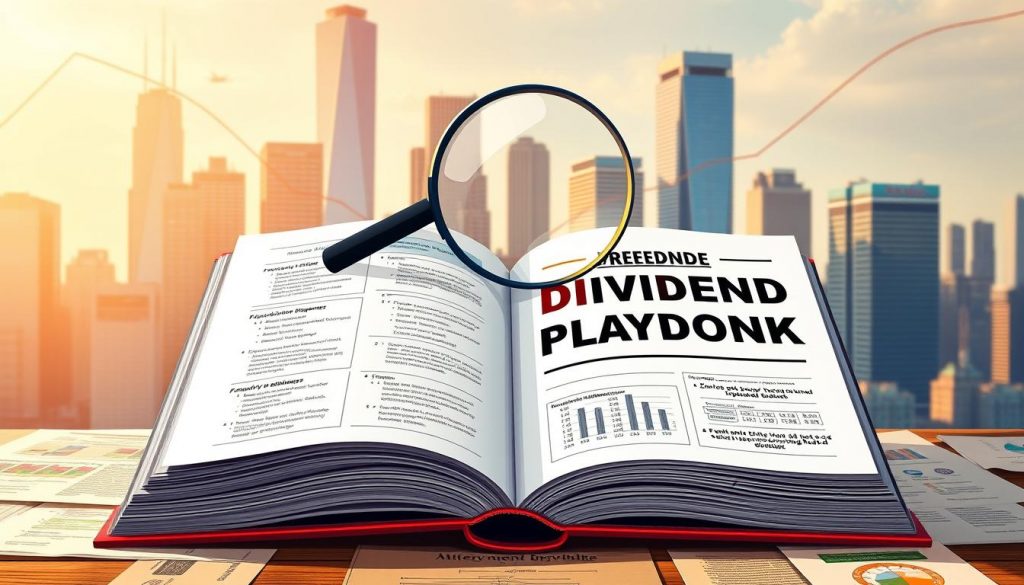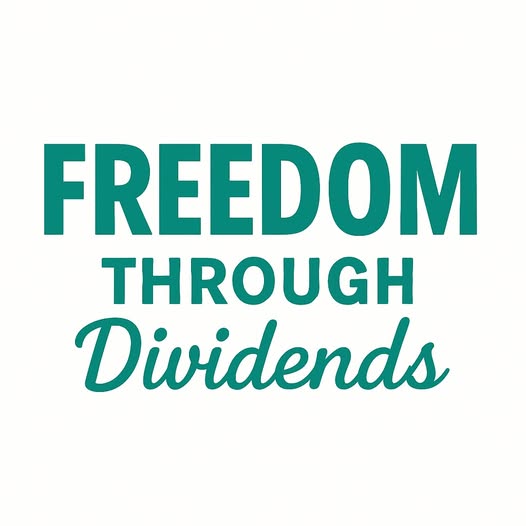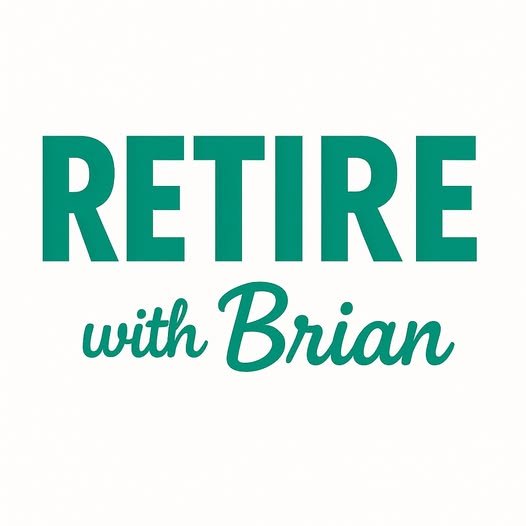Investing in the stock market can seem scary, especially if you want to grow your wealth over time. We’ve made it easier by offering a simple way to earn a steady income.
Using a dividend playbook and ETFs in your strategy can build a strong financial base. Our method aims for long-term stability, not quick profits.
Exploring dividend investing and ETFs will show you how they can help reach your financial goals.
Key Takeaways
- Understand the importance of a dividend playbook in investment strategies.
- Learn how ETFs can complement dividend investing.
- Discover the benefits of combining dividend investing and ETFs.
- Explore the potential for long-term wealth growth.
- Gain insights into creating a robust financial foundation.
The Power of Dividend Investing in Wealth Building
Dividend investing is a smart way to earn passive income and grow your wealth over time. It’s a strategy that many investors have used for years to earn steady income.
Why Dividends Matter for Long-Term Investors
Dividends offer a steady income stream, which is great for long-term investors. By investing in dividend-paying stocks, you get a stable return, even when markets are shaky.
The Compounding Effect of Dividend Reinvestment
When you reinvest dividends, their power grows through compounding. This means your dividends earn more dividends, leading to a lot of wealth over time.
Historical Performance of Dividend-Paying Stocks
Dividend-paying stocks have often outperformed non-dividend stocks. Here’s a look at their historical performance:
| Investment Type | Average Annual Return | 10-Year Return |
|---|---|---|
| Dividend-Paying Stocks | 8% | 120% |
| Non-Dividend Paying Stocks | 6% | 90% |
Using dividend investing, you can build a strong wealth strategy. It combines income and long-term growth.
Understanding Our Dividend Playbook Strategy
Our dividend playbook strategy aims to help investors reach financial freedom. It uses a disciplined investment method. This method includes knowing how to invest in dividends and focusing on building wealth over time.
Core Principles of Successful Dividend Investing
Successful dividend investing relies on a few key principles. Consistency is important; companies that always pay dividends are more trustworthy. Diversification is also key, as it reduces risk by spreading investments across different areas.
A diversified dividend portfolio can offer a steady income. It also helps protect against market ups and downs.
How Our Approach Differs from Traditional Investment Methods
Our strategy is different from traditional methods. We focus on the total return of dividend stocks. This includes both the income from dividends and the growth in stock value. We see dividend investing as a way to earn income now and grow wealth over time.
The Balance Between Current Income and Future Growth
Our strategy balances current income with future growth. We choose dividend stocks that offer steady income. But we also look for stocks that could grow in value.
| Investment Criteria | Current Income Focus | Future Growth Potential |
|---|---|---|
| Dividend Yield | High yield for immediate income | Moderate yield with growth potential |
| Company Stability | Established companies with stable dividends | Growing companies with increasing dividends |
| Growth Potential | Lower growth expectations | Higher growth expectations |
By balancing these factors, investors can build a portfolio that suits their financial goals. Whether they want income now or growth later, our strategy helps.
ETFs: The Building Blocks of a Diversified Income Portfolio
ETFs play a key role in building a strong income portfolio. They bring together diversification, flexibility, and income potential. This makes them a great choice for investors looking to grow their income.
What Makes ETFs Ideal for Income Investors
ETFs are great for income investors for many reasons. They offer instant diversification, letting you invest in many assets with one buy. This can lower risk and boost income stability.
ETFs are also transparent, showing their holdings daily. This helps investors make smart choices. Plus, they’re often cost-effective, with lower fees than mutual funds.
Types of Dividend-Focused ETFs Available
There are many dividend-focused ETFs to choose from. Some focus on high-dividend-yielding stocks, while others aim for dividend growth or dividend aristocrats. You can pick the one that fits your income goals and risk level.
- High-Dividend-Yield ETFs: These ETFs invest in stocks with above-average dividend yields, providing a regular income stream.
- Dividend Growth ETFs: Focused on companies with a history of increasing dividend payments, these ETFs offer the potential for growing income over time.
- Dividend Aristocrat ETFs: Tracking indices of companies that have consistently increased their dividends, these ETFs provide a combination of income and potential for long-term growth.
Comparing Dividend ETFs vs. Individual Dividend Stocks
Choosing between dividend ETFs and individual stocks depends on your goals and risk comfort. ETFs offer a diversified portfolio of stocks, which can lower risk. Individual stocks, however, let you pick companies you believe in, potentially leading to higher returns.
| Feature | Dividend ETFs | Individual Dividend Stocks |
|---|---|---|
| Diversification | High | Low |
| Risk | Lower | Higher |
| Potential Returns | Average | Potentially Higher |
Build Steady Income: How My Dividend Playbook and ETFs Can Grow Your Wealth
Our method of dividend investing, paired with ETFs, is a strong way to earn steady income and grow wealth. It mixes two strategies to make a portfolio that meets income needs and aims for growth. This mix helps investors balance their goals.
Combining Dividend Stocks and ETFs for Optimal Results
By mixing dividend stocks and ETFs, we craft a solid investment plan. Dividend stocks give a steady income, while ETFs bring diversity and flexibility. This blend helps investors reduce risk and boost returns over time.
For example, adding stocks like Johnson & Johnson, Procter & Gamble, and Coca-Cola for stability. Then, ETFs like Vanguard Dividend Appreciation ETF (VIG) or iShares Core S&P U.S. Dividend Aristocrats ETF (NOBL) can increase yields and diversify.
Creating a Balanced Portfolio for Income and Growth
A balanced portfolio is key for both income and growth. We aim to mix high-dividend stocks for quick income with growth ETFs for long-term gains.
The Three-Tier Approach to Sustainable Income Generation
Our three-tier method includes:
- Tier 1: Core dividend stocks for stable income
- Tier 2: Dividend growth stocks for potential capital appreciation
- Tier 3: Sector-specific ETFs for diversification and targeted exposure
This strategy helps investors build a portfolio that withstands market ups and downs.
An investor might put 50% in Tier 1 stocks, 30% in Tier 2, and 20% in Tier 3 ETFs. Adjustments can be made based on personal financial goals and risk level.
By using our dividend playbook and ETFs, investors can create a steady income stream. This supports their long-term financial goals.
Setting Realistic Income Goals with Dividends and ETFs
Starting a steady income with dividends and ETFs means setting clear financial goals. It’s important to know how these investments can help reach those goals. We need to match our investment plan with our financial dreams.
Calculating Your Potential Dividend Income
To set income goals, first figure out your dividend income potential. Look at the dividend yield of your investments and your portfolio’s performance. Dividend yield is the annual dividend payment divided by the stock’s price.
For example, a stock with a $2 annual dividend and a $50 price has a 4% yield. Knowing this helps investors guess their dividend income.
Aligning Investment Strategy with Financial Objectives
It’s key to match your investment plan with your financial goals for financial freedom. Choose the right dividend stocks and ETFs. Also, make sure your portfolio is diverse and fits your risk level and goals.
Creating Your Personal Income Timeline
Make a personal income plan to reach your financial goals. Project your future income needs and see how dividends and ETFs can help. A good plan keeps you on track with your long-term goals.
| Year | Projected Income Needs | Dividend Income | ETF Income |
|---|---|---|---|
| 1 | $10,000 | $4,000 | $6,000 |
| 5 | $12,000 | $6,000 | $6,000 |
| 10 | $15,000 | $8,000 | $7,000 |
By following these steps and keeping a diverse portfolio, investors can aim for financial freedom. A steady income from dividends and ETFs is the goal.
Step-by-Step Guide to Building Your Dividend Portfolio

A well-diversified dividend portfolio is key to a successful long-term investment strategy. By picking quality dividend stocks and ETFs, investors can get a steady passive income. This income helps reach financial goals.
Researching and Selecting Quality Dividend Stocks
The first step is to research and pick quality dividend stocks. We look at the company’s dividend history, payout ratio, and financial health. We seek companies with a solid dividend track record and growth potential.
It’s important to consider the industry and market trends when evaluating stocks. Companies in stable industries that have weathered economic downturns are more appealing to dividend investors.
Evaluating Dividend History and Sustainability
A company’s dividend history and sustainability are crucial. We check the dividend payout ratio, which should be under 60%. This ratio shows if the dividend is sustainable.
Dividend Yield vs. Dividend Growth Analysis
Investors often compare dividend yield and growth. Dividend yield is the annual dividend payment per share to the stock’s current price. Dividend growth is the increase in dividend payments over time.
| Metric | Description | Importance |
|---|---|---|
| Dividend Yield | Annual dividend per share / Current stock price | High yield indicates higher income, but may signal underlying issues |
| Dividend Growth Rate | Rate of increase in dividend payments over time | High growth rate indicates potential for increasing income |
| Payout Ratio | Percentage of earnings paid out as dividends | Sustainability indicator; lower ratio suggests more sustainable dividend |
By balancing dividend yield and growth, investors can build a diversified portfolio. This portfolio generates consistent passive income and reduces risk. Our dividend playbook stresses the need for thorough research and a long-term view for success in dividend investing.
Selecting the Right ETFs for Your Income Strategy
Choosing the right ETFs is key to a good income strategy. It’s important to pick ETFs that fit your financial goals. Understanding how ETFs can meet your income needs is crucial.
Criteria for Evaluating Dividend ETFs
When looking at dividend ETFs, several things matter. Dividend yield is important, but it’s not everything. We also need to look at the expense ratio. A lower expense ratio means more money in our pockets.
Another key factor is the ETF’s investment strategy. Some track a dividend-focused index, while others are actively managed. Knowing how an ETF works helps us choose wisely.
Top Dividend ETFs for Different Investment Goals
Investors have different goals, like regular income or long-term growth. For those focused on income, Vanguard Dividend Appreciation ETF or iShares Core S&P U.S. Dividend Aristocrats ETF are good choices.
For a mix of income and growth, Schwab U.S. Dividend Equity ETF might be better. It’s important to think about our financial goals and risk level when picking an ETF.
Balancing Expense Ratios and Dividend Yields
Finding the right balance between expense ratio and dividend yield is important. A higher yield might look appealing, but costs matter too. A lower-cost ETF with a lower yield might give better returns overall.
“The key is not to prioritize the highest yield, but to find a balance that aligns with your overall investment strategy and financial goals.”
By carefully looking at these factors and our investment strategy, we can build a strong income portfolio. This will help us reach financial independence.
Tax-Efficient Strategies for Dividend and ETF Investors
Tax efficiency is key for those investing in dividends and ETFs. Knowing how to reduce taxes can greatly improve our returns. It’s important to grasp the tax rules for dividends and ETFs.
Understanding Dividend Taxation in the United States
In the U.S., dividends are taxed differently. Qualified dividends come from U.S. corporations or those listed on major U.S. exchanges. These are taxed at a lower rate, like long-term capital gains.
Optimizing Account Types for Tax Advantages
Choosing the right accounts for your investments can save taxes. Putting tax-inefficient investments in tax-deferred accounts helps reduce tax bills.
Qualified vs. Non-Qualified Dividends: What You Need to Know
It’s vital to know the difference between qualified and non-qualified dividends for tax planning. Qualified dividends are taxed at a lower rate, making them better for tax efficiency. Here’s a quick comparison:
| Dividend Type | Tax Rate | Holding Period Requirement |
|---|---|---|
| Qualified Dividends | 0%, 15%, or 20% based on income level | More than 60 days during the 121-day period starting 60 days before the ex-dividend date |
| Non-Qualified Dividends | Ordinary income tax rate | No specific holding period |
By using these tax-efficient strategies, investors can boost their returns. This helps them get closer to financial freedom.
Common Mistakes to Avoid in Dividend and ETF Investing

Investing in dividends and ETFs can be tricky. Knowing common pitfalls is key to reaching your financial goals. A solid investment strategy helps you avoid these challenges.
Yield Traps and How to Identify Them
Yield traps are a big risk in dividend investing. These are high-yielding stocks or ETFs from companies in trouble. To steer clear, it’s important to check the investment’s financial health.
Overlooking Diversification in Pursuit of Income
Chasing high income can make investors forget about diversification. A diversified portfolio is vital for managing risk and steady passive income. By investing in different areas, we can reduce risk.
Timing Errors That Can Derail Your Income Strategy
Investing timing is critical. Mistakes like buying at market peaks can hurt returns. It’s wise to focus on the long term and avoid short-term market swings.
| Common Mistake | Potential Impact | Mitigation Strategy |
|---|---|---|
| Falling into yield traps | Loss of capital due to unsustainable dividend payments | Thorough financial analysis of the investment |
| Overlooking diversification | Increased risk and potential for significant losses | Diversification across asset classes and sectors |
| Timing errors | Reduced returns due to poor market timing | Long-term investment perspective and dollar-cost averaging |
Creating a Passive Income Stream for Financial Independence
The path to financial freedom is through a steady passive income. As we grow our wealth, we focus on making money without working. This way, our lifestyle can be supported without needing a job.
Transitioning from Wealth Building to Income Generation
Switching from growing wealth to making income is key. Dividend investing and ETFs are important here. They offer a steady income. We need to check if our investments can keep giving us consistent returns.
Sustainable Withdrawal Strategies for Retirement
For a lasting passive income in retirement, a smart withdrawal plan is vital. We must find a balance between getting income now and saving for later. This ensures our money lasts as long as we need it.
Reinvestment vs. Income: When to Make the Switch
Choosing when to take dividends as income is a big decision. Usually, this happens when we retire or our passive income meets our expenses. Making this switch right can boost our income and cut taxes.
| Strategy | Wealth Building Phase | Income Generation Phase |
|---|---|---|
| Dividend Reinvestment | High | Low |
| Dividend Income | Low | High |
| Portfolio Diversification | Medium | High |
By knowing these strategies and making smart choices, we can build a strong passive income. This income supports our journey to financial freedom.
Monitoring and Rebalancing Your Income Portfolio
For a thriving dividend investment strategy, it’s crucial to monitor and rebalance your portfolio regularly. A diversified portfolio with dividend stocks and ETFs offers a steady income. But, it needs constant checking to stay on track with your financial goals.
Key Metrics to Track in Your Dividend Investments
Keep an eye on dividend yield, payout ratio, and your ETFs‘ performance. These metrics show if your portfolio needs adjustments to fit your investment strategy.
When and How to Adjust Your Holdings
Rebalancing means buying or selling to keep your asset mix right. It helps manage risk and can boost long-term gains. A financial expert says, “Rebalancing is key to a good investment strategy. It keeps your portfolio in line with your risk level and goals.”
“Rebalancing is a critical component of a successful investment strategy, as it ensures that your portfolio remains aligned with your risk tolerance and financial objectives.”
Using Technology to Streamline Portfolio Management
Technology can make monitoring and rebalancing easier. There are many tools and platforms for real-time tracking and alerts. They help you manage your diversified portfolio and make smart choices.
Conclusion: Your Path to Financial Independence Through Dividends and ETFs
Building a steady income through dividends and ETFs is a strong way to reach financial freedom. It helps you grow your wealth by understanding dividend investing and using ETFs. This way, you can make a portfolio that brings in steady returns over time.
Our dividend playbook and ETF strategy are made to help you earn steady income and grow your wealth. By mixing quality dividend stocks with top-performing ETFs, you get a balanced portfolio. This portfolio meets your financial goals and risk level.
To get to financial independence, stick to your investment plan and keep an eye on your portfolio. This will help you build a steady income. It supports your long-term financial goals and helps your wealth grow over time.
FAQ
What is a dividend playbook, and how can it help me build a steady income?
Our dividend playbook is a detailed strategy for investing in dividend stocks. It helps you earn a steady income. By following it, you can build a portfolio that meets your income needs and grows over time.
How do ETFs contribute to a diversified income portfolio?
ETFs are a type of investment that tracks a specific market or sector. They help diversify your portfolio by offering broad exposure. This reduces risk and can increase potential returns.
What are the benefits of combining dividend stocks and ETFs in my investment portfolio?
Mixing dividend stocks and ETFs creates a strong income portfolio. It balances the stability of dividend stocks with the diversification of ETFs. This strategy aims to maximize returns while keeping risk low.
How do I calculate my potential dividend income from my investments?
To figure out your dividend income, look at the dividend yield and total investment. Analyzing these helps estimate your income. This information guides your investment strategy.
What are some common mistakes to avoid when investing in dividends and ETFs?
Avoid yield traps, neglecting diversification, and timing errors. Knowing these pitfalls helps craft a better investment plan. This plan should match your financial goals.
How can I achieve financial independence through dividend and ETF investing?
Financial independence needs a solid investment plan, discipline, and patience. Dividend and ETF investing can create a passive income. This income stream helps secure your financial future.
What is the importance of monitoring and rebalancing my income portfolio?
Keeping an eye on your portfolio and rebalancing is key. It ensures your investments stay on track with your goals. Regular monitoring and adjustments help maintain the best asset mix for returns.
How can I optimize my investment strategy for tax efficiency?
For tax efficiency, consider the tax impact of your investments. Understand how dividend income is taxed. Using tax-advantaged accounts can lower your tax bill and increase your after-tax earnings.

